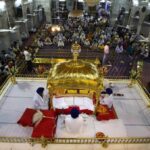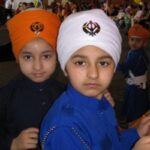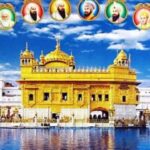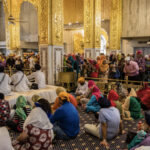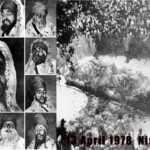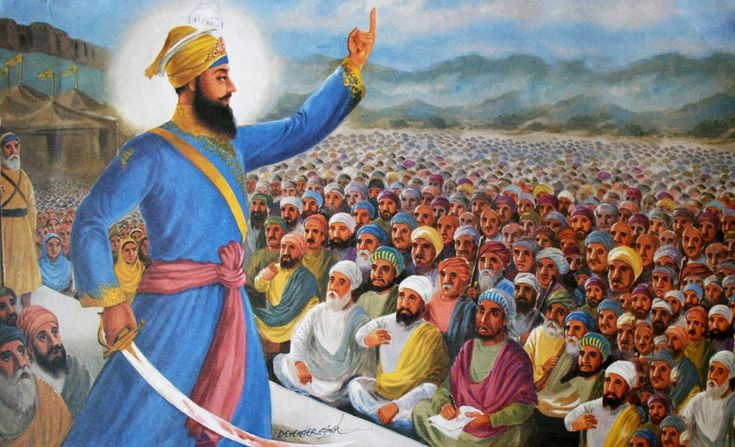Sikhism has long and profound origins because it developed from Hinduism. However, Sikhs uphold their unique traditions, which are fascinating to learn about.
In Sikhism, There Are Ten Human Gurus
The 10 human gurus are considered the spiritual forefathers of Sikhism. In the year 1469, Guru Nanak, the first guru, was born. Guru Gobind Singh, the final human guru, passed away in 1708. Depending on the difficulties the Sikh community was facing at the time, every Guru made a valuable contribution to the religious tradition. Sikhs enjoy telling tales about their Gurus’ amazing and miraculous lives. There is an entire area of audio stories for Sikh children on the SikhNet website. The 10 human Gurus are a common area of concentration.
Sikhs Visit Gurdwaras to Worship
Gurdwaras, pronounced “gur-DWAH-ruhs,” are the name given to Sikh temples and imply “gate or entrance to the Guru.” The Supreme Being, Waheguru, serves as the Guru in this instance. Gurdwaras come in all different sizes and shapes, but they invariably have at least one Sikh flag flying on their structure or grounds. The khanda, a Sikh symbol, is displayed on the orange or yellow flags. Every Sikh covers their head and takes off their shoes before entering a gurdwara. The Golden Temple in India is the most famous and popular gurdwara.
In Sikhism, The Holy Book is a Guru, too
The holy book of Sikhism is the Guru Granth Sahib, pronounced SAH-heeb. It is regarded as the Sikh tradition’s 11th and last Guru. Sikhs usually treat the text with the utmost reverence and preserve it on a raised platform that is covered by a canopy. Most of the time, it is upholstered in lovely fabrics and seated on cushions. Sikh leaders pass a fan over it while praying. The fan is known as a chaur and is typically made of yak hair. When it is time to read from the text, Sikhs uncover it.
Sikhs Enjoy Chanting a Lot
Prayers are always sung or recited during worship occasions. Since the chanting is a call-and-response style, or kirtan (pronounced “keer-tan”), anyone can join in. The harmonium (hand pump organ) and the tabla are two classic instruments that are frequently used by musicians to lead the prayers (drums). Men may sit on one side and ladies on the other in some gurdwaras. Other gurdwaras have communal seating for families.
They Enjoy Serving Meals!
Another typical Sikh custom is langar, pronounced “LANG-gar.” Sikhism is renowned for valuing equality and harmony. Serving free vegetarian meals is one way to embody that belief. No one is offered a better seat or finer food than anyone else; everyone sits on the floor. Langar always follows worship sessions, although Sikhs also offer them to the general public on other occasions, especially to people in need.
Sikhism Has Enjoyable Holy Days
Vaisakhi, a mid-April New Year’s celebration also observed by Hindus, is one of the most respected holy days in Sikhism. There are fairs, bhangra dance, and group kirtans as part of the Sikh celebrations. The ninth human Guru of the Sikhs, Guru Tegh Bahadur, was beheaded, and this holiday honors his memory. There are many hilarious bhangra dance videos online. One of them is this.
They Are Expert Riders on Horseback
Hola Mohalla is a significant Sikh holiday as well. It often occurs in March and corresponds with the Holi Hindu spring festival. Kirtans and langars are present as usual. However, Hola Mohalla also pays tribute to the heritage of Sikhism’s warriors and artists. Sikhs perform fictitious battles and exchange poems throughout the day. Competitions for horseback riding are another noteworthy event. In this video, expert Sikh motorcyclists demonstrate some of their tricks.
Devout Sikhs Lead Dedicated Lives
Some Sikhs get initiations into the tradition, such as baptism. These Sikhs legally commit to upholding the Sikh values of equality, unity, and peace. Additionally, they abstain from using tobacco, alcohol, and other narcotics, as well as cutting their hair. Men, women, and kids who have received their Sikh baptism all don some type of turban. These Sikhs are also awarded the titles of Singh (for men) or Kaur in recognition of their loyalty (for women).
Devoted Sikhs Wear the “Five K’s” As Well
One of the five Ks is uncut hair or kesh. A wooden comb (kangha), an iron bracelet (kara), an iron dagger (kirpan), and unique underwear make up the other four items devoted Sikhs always wear (kachera). The five K’s are so named because each word in Punjabi starts with the letter “k.” These tenets serve as a symbol of a person’s devotion to the Sikh way of life.
Services Not Available in English
Sikhs chant in Punjabi, the sacred language of Sikhism, during religious ceremonies. The written version, known as Gurmukhi, was created by Guru Angad, the second human guru of the Sikhs. There are 35 core letters in the Gurmuhkhi script, plus several extra consonants and diacritical markings. All of their sacred text’s hymns, poetry, and couplets are written in Gurmukhi. Kids may learn how to write the 35 letters of the alphabet with this video.

